The automotive landscape is rapidly evolving, with manufacturers striving to deliver vehicles that balance performance, technology, and practicality. Two notable contenders in the compact SUV segment are the Mercedes GLB and the VW Tiguan. Both vehicles offer a plethora of features and innovations that cater to the needs of modern drivers. This article will dive deep into a head-to-head comparison of these two popular SUVs, evaluating their technical aspects, performance metrics, and features.
Mercedes GLB vs VW Tiguan – Performance, range & efficiency compared
Compare performance, boot capacity, efficiency and price at a glance.
Find out which car is the better choice for you – Mercedes GLB or VW Tiguan?
Performance and Engine Options
The Mercedes GLB boasts a diverse range of engine configurations, including petrol mild hybrid and diesel options. It offers power outputs ranging from 116 HP to an impressive 320 HP in its higher trims. The GLB excels in acceleration, with the quickest variant capable of reaching 0-100 km/h in just 5.5 seconds, making it a strong performer on the road.
On the other hand, the VW Tiguan comes equipped with a similarly broad selection of engines, offering choices including petrol, diesel, and plugin hybrid variants. The Tiguan’s power ranges from 130 HP to a robust 272 HP. With the top-end option achieving 0-100 km/h in just 5.9 seconds, the Tiguan positions itself as a competitive alternative, particularly for those seeking a more eco-friendly vehicle with its plugin hybrid offering.
Fuel Efficiency and Consumption
When it comes to fuel efficiency, the Mercedes GLB has various consumption figures ranging from 5.6 to 9 L/100 km, depending on the engine variant. This makes it a respectable choice for those conscious of fuel costs, particularly with its diesel options providing better efficiency.
Conversely, the VW Tiguan excels in hybrid technology, achieving remarkably low consumption figures of as low as 0.4 L/100 km for its plugin hybrid variant. With a general consumption range of 5.3 to 8.5 L/100 km, the Tiguan appeals to environmentally conscious drivers and those looking to minimize their fuel expenditure. The Tiguan's electric range of approximately 112 km also supports a more sustainable driving option for urban environments.
Interior Space and Practicality
Inside, the Mercedes GLB offers a spacious and well-appointed cabin, comfortably seating five passengers. With a trunk capacity ranging from 565 to 570 liters, it provides ample storage space for family trips or daily errands. The interior features high-quality materials and advanced technology, including a prominent infotainment system.
In comparison, the VW Tiguan has an edge in trunk capacity, boasting up to 652 liters. This additional space can be particularly advantageous for families or those needing extra cargo room. The Tiguan also offers a user-friendly interior design with an intuitive infotainment system, ensuring a comfortable driving experience.
Innovations and Technology
The Mercedes GLB stands out with its cutting-edge MBUX infotainment system, which includes voice-command functionality and an impressive array of driver assistance features. The incorporation of advanced driver aids, such as adaptive cruise control and lane-keeping assistance, enhances the safety and comfort of the driving experience.
Meanwhile, the VW Tiguan features the latest in Volkswagen’s infotainment technology, including a digital cockpit that enhances the driver’s interface for ease of use. Additionally, its suite of safety features, such as emergency braking and blind-spot monitoring, reflect VW's commitment to providing a secure driving environment. The latest model also introduces new connectivity options, including over-the-air software updates, keeping the vehicle current with the latest technology.
Conclusion: Which One to Choose?
When comparing the Mercedes GLB and VW Tiguan, potential buyers will find two impressive SUVs, each with its strengths. The Mercedes GLB shines with superior performance and luxury features, whereas the VW Tiguan offers exceptional fuel efficiency and more cargo space. Ultimately, the choice comes down to individual preferences—whether you prioritize performance and luxury or practicality and eco-friendliness. Either way, both vehicles deliver on the promise of modern SUV design and technology.
Here’s where it gets real: The technical differences in detail
Costs and Efficiency:
Price and efficiency are often the first things buyers look at. Here it becomes clear which model has the long-term edge – whether at the pump, the plug, or in purchase price.
VW Tiguan has a distinct advantage in terms of price – it starts at 32800 £, while the Mercedes GLB costs 40500 £. That’s a price difference of around 7724 £.
Fuel consumption also shows a difference: VW Tiguan manages with 0.40 L and is therefore clearly more efficient than the Mercedes GLB with 5.60 L. The difference is about 5.20 L per 100 km.
Engine and Performance:
Power, torque and acceleration say a lot about how a car feels on the road. This is where you see which model delivers more driving dynamics.
When it comes to engine power, the Mercedes GLB has a slightly edge – offering 320 HP compared to 272 HP. That’s roughly 48 HP more horsepower.
In acceleration from 0 to 100 km/h, the Mercedes GLB is barely noticeable quicker – completing the sprint in 5.50 s, while the VW Tiguan takes 5.90 s. That’s about 0.40 s faster.
In terms of top speed, the Mercedes GLB performs slight better – reaching 250 km/h, while the VW Tiguan tops out at 242 km/h. The difference is around 8 km/h.
Both models offer the same torque – 400 Nm.
Space and Everyday Use:
Whether family car or daily driver – which one offers more room, flexibility and comfort?
Both vehicles offer seating for 5 people.
In curb weight, VW Tiguan is barely noticeable lighter – 1599 kg compared to 1640 kg. The difference is around 41 kg.
In terms of boot space, the VW Tiguan offers to a small extent more room – 652 L compared to 570 L. That’s a difference of about 82 L.
In maximum load capacity, the Mercedes GLB performs barely noticeable better – up to 1805 L, which is about 155 L more than the VW Tiguan.
When it comes to payload, VW Tiguan hardly perceptible takes the win – 533 kg compared to 500 kg. That’s a difference of about 33 kg.
Who wins the race?
The VW Tiguan proves to be wins the duel decisively and therefore becomes our DriveDuel Champion!
VW Tiguan is the better all-rounder in this comparison.
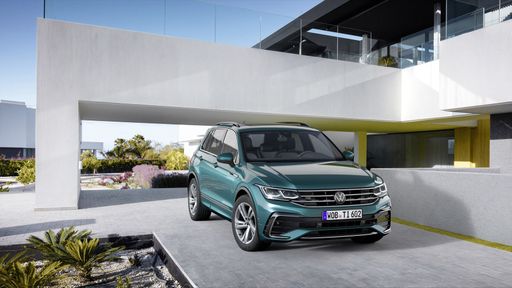 @ Volkswagen AG / VW Media
@ Volkswagen AG / VW Media
VW Tiguan
Mercedes GLB
The Mercedes-Benz GLB exudes a robust yet sophisticated presence, combining the versatility of an SUV with the elegance the brand is renowned for. Its spacious interior is thoughtfully designed to accommodate modern lifestyles, offering flexibility and comfort for both drivers and passengers. With advanced technology seamlessly integrated throughout, the GLB ensures a driving experience that is both dynamic and intuitive.
details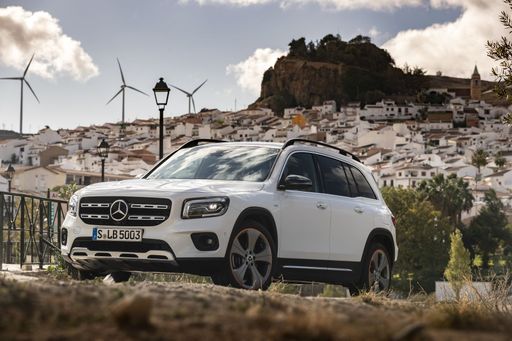 @ Mercedes-Benz Group Media
@ Mercedes-Benz Group Media
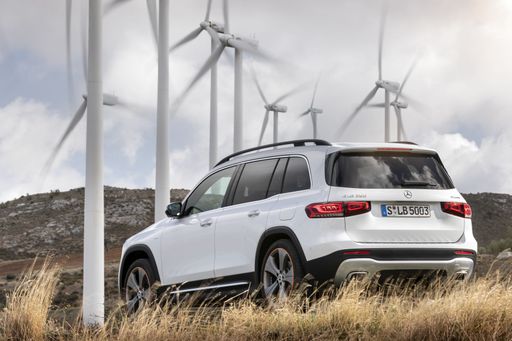 @ Mercedes-Benz Group Media
@ Mercedes-Benz Group Media
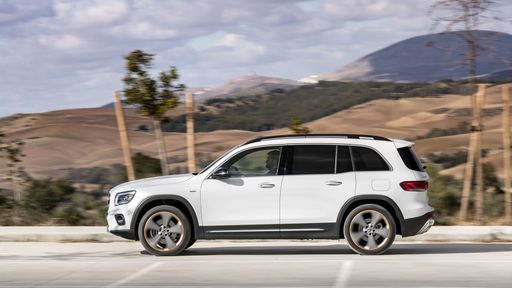 @ Mercedes-Benz Group Media
@ Mercedes-Benz Group Media
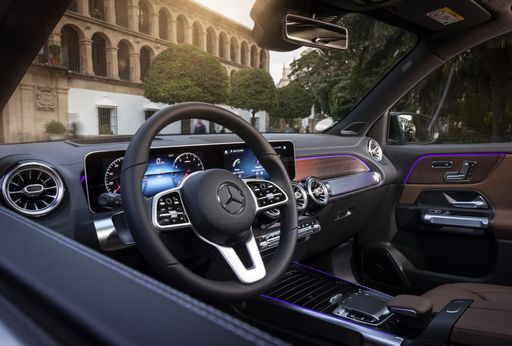 @ Mercedes-Benz Group Media
@ Mercedes-Benz Group Media
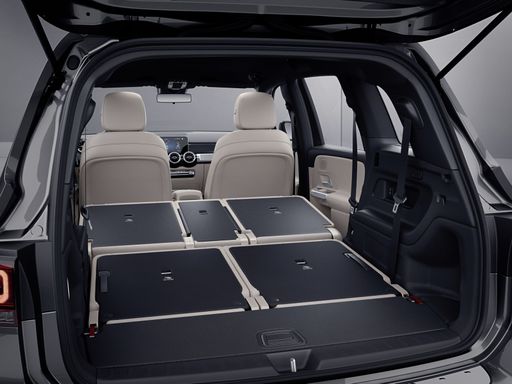 @ Mercedes-Benz Group Media
@ Mercedes-Benz Group Media
VW Tiguan
The VW Tiguan blends sensible family practicality with a dash of German polish, delivering a calm, reassuring ride and a cabin that never feels like an afterthought. For buyers who want an SUV that’s easy to live with yet still nicely dressed, the Tiguan is the grown‑up choice that keeps a cheeky wink in reserve.
details @ Volkswagen AG / VW Media
@ Volkswagen AG / VW Media
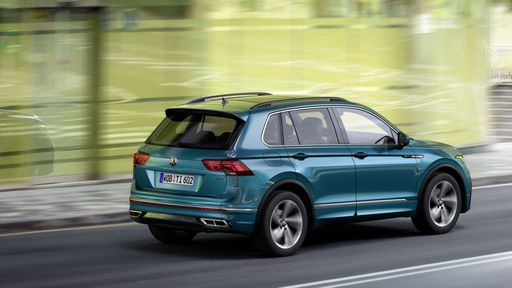 @ Volkswagen AG / VW Media
@ Volkswagen AG / VW Media
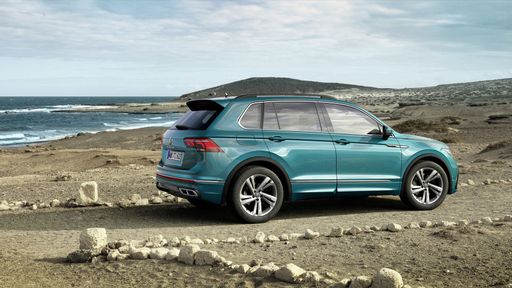 @ Volkswagen AG / VW Media
@ Volkswagen AG / VW Media
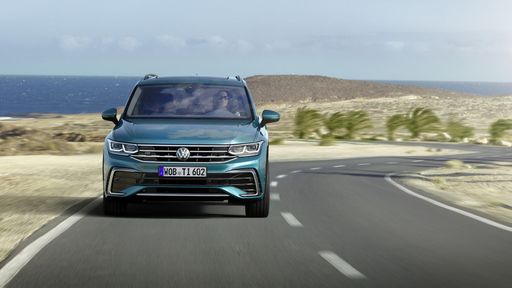 @ Volkswagen AG / VW Media
@ Volkswagen AG / VW Media
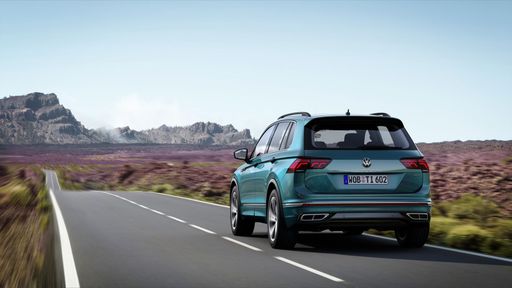 @ Volkswagen AG / VW Media
@ Volkswagen AG / VW Media
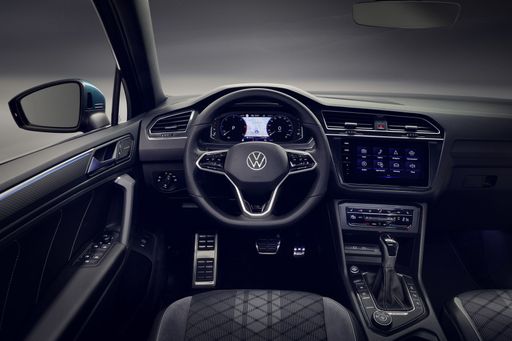 @ Volkswagen AG / VW Media
@ Volkswagen AG / VW Media
 @ Mercedes-Benz Group Media
@ Mercedes-Benz Group Media
|
 @ Volkswagen AG / VW Media
@ Volkswagen AG / VW Media
|
|
|
|
Costs and Consumption |
|
|---|---|
|
Price
40500 - 65300 £
|
Price
32800 - 51900 £
|
|
Consumption L/100km
5.6 - 9 L
|
Consumption L/100km
0.4 - 8.4 L
|
|
Consumption kWh/100km
-
|
Consumption kWh/100km
-
|
|
Electric Range
-
|
Electric Range
119 - 129 km
|
|
Battery Capacity
-
|
Battery Capacity
19.70 kWh
|
|
co2
146 - 204 g/km
|
co2
8 - 190 g/km
|
|
Fuel tank capacity
52 - 60 L
|
Fuel tank capacity
45 - 58 L
|
Dimensions and Body |
|
|---|---|
|
Body Type
SUV
|
Body Type
SUV
|
|
Seats
5
|
Seats
5
|
|
Doors
5
|
Doors
5
|
|
Curb weight
1640 - 1820 kg
|
Curb weight
1599 - 1890 kg
|
|
Trunk capacity
565 - 570 L
|
Trunk capacity
490 - 652 L
|
|
Length
4634 - 4650 mm
|
Length
4539 mm
|
|
Width
1834 - 1850 mm
|
Width
1842 - 1859 mm
|
|
Height
1665 - 1692 mm
|
Height
1656 - 1658 mm
|
|
Max trunk capacity
1800 - 1805 L
|
Max trunk capacity
1486 - 1650 L
|
|
Payload
500 kg
|
Payload
460 - 533 kg
|
Engine and Performance |
|
|---|---|
|
Engine Type
Petrol MHEV, Diesel
|
Engine Type
Plugin Hybrid, Petrol, Petrol MHEV, Diesel
|
|
Transmission
Automatic
|
Transmission
Automatic
|
|
Transmission Detail
Dual-Clutch Automatic
|
Transmission Detail
Dual-Clutch Automatic
|
|
Drive Type
Front-Wheel Drive, All-Wheel Drive
|
Drive Type
Front-Wheel Drive, All-Wheel Drive
|
|
Power HP
116 - 320 HP
|
Power HP
130 - 272 HP
|
|
Acceleration 0-100km/h
5.5 - 11.5 s
|
Acceleration 0-100km/h
5.9 - 10.6 s
|
|
Max Speed
188 - 250 km/h
|
Max Speed
198 - 242 km/h
|
|
Torque
230 - 400 Nm
|
Torque
220 - 400 Nm
|
|
Number of Cylinders
4
|
Number of Cylinders
4
|
|
Power kW
85 - 235 kW
|
Power kW
96 - 200 kW
|
|
Engine capacity
1332 - 1991 cm3
|
Engine capacity
1498 - 1984 cm3
|
General |
|
|---|---|
|
Model Year
2025
|
Model Year
2024 - 2025
|
|
CO2 Efficiency Class
E, F, G
|
CO2 Efficiency Class
B, G, D, E, F
|
|
Brand
Mercedes-Benz
|
Brand
VW
|
What drivetrain options does the Mercedes GLB have?
Available configurations include Front-Wheel Drive or All-Wheel Drive.
The prices and data displayed are estimates based on German list prices and may vary by country. This information is not legally binding.
